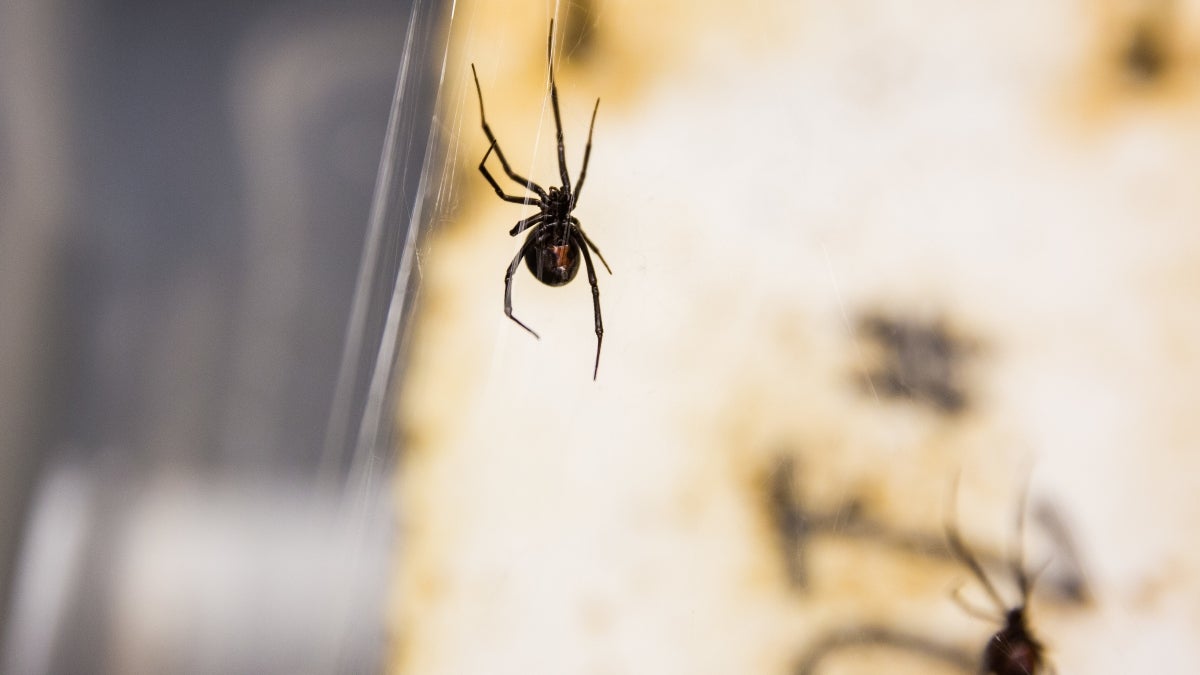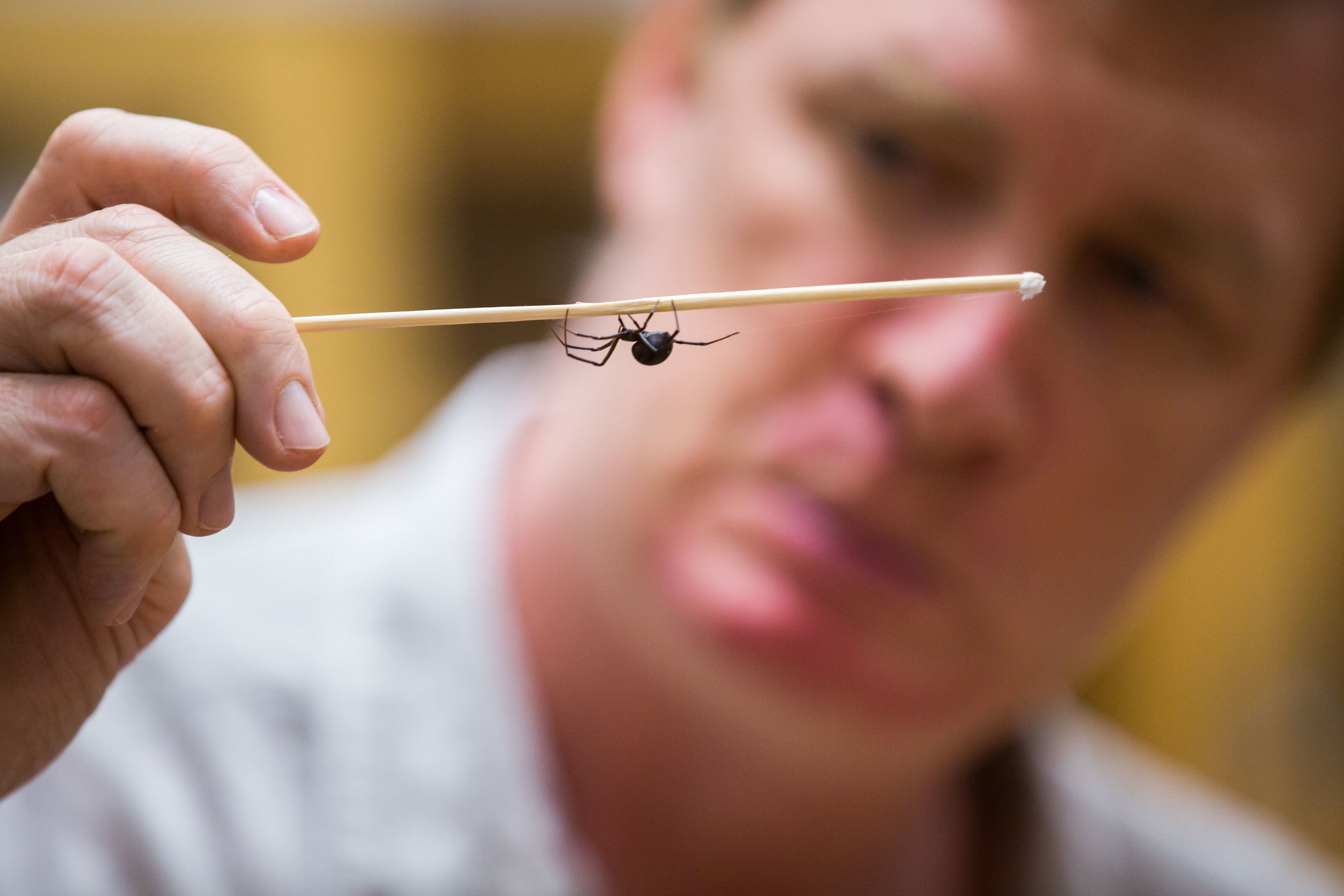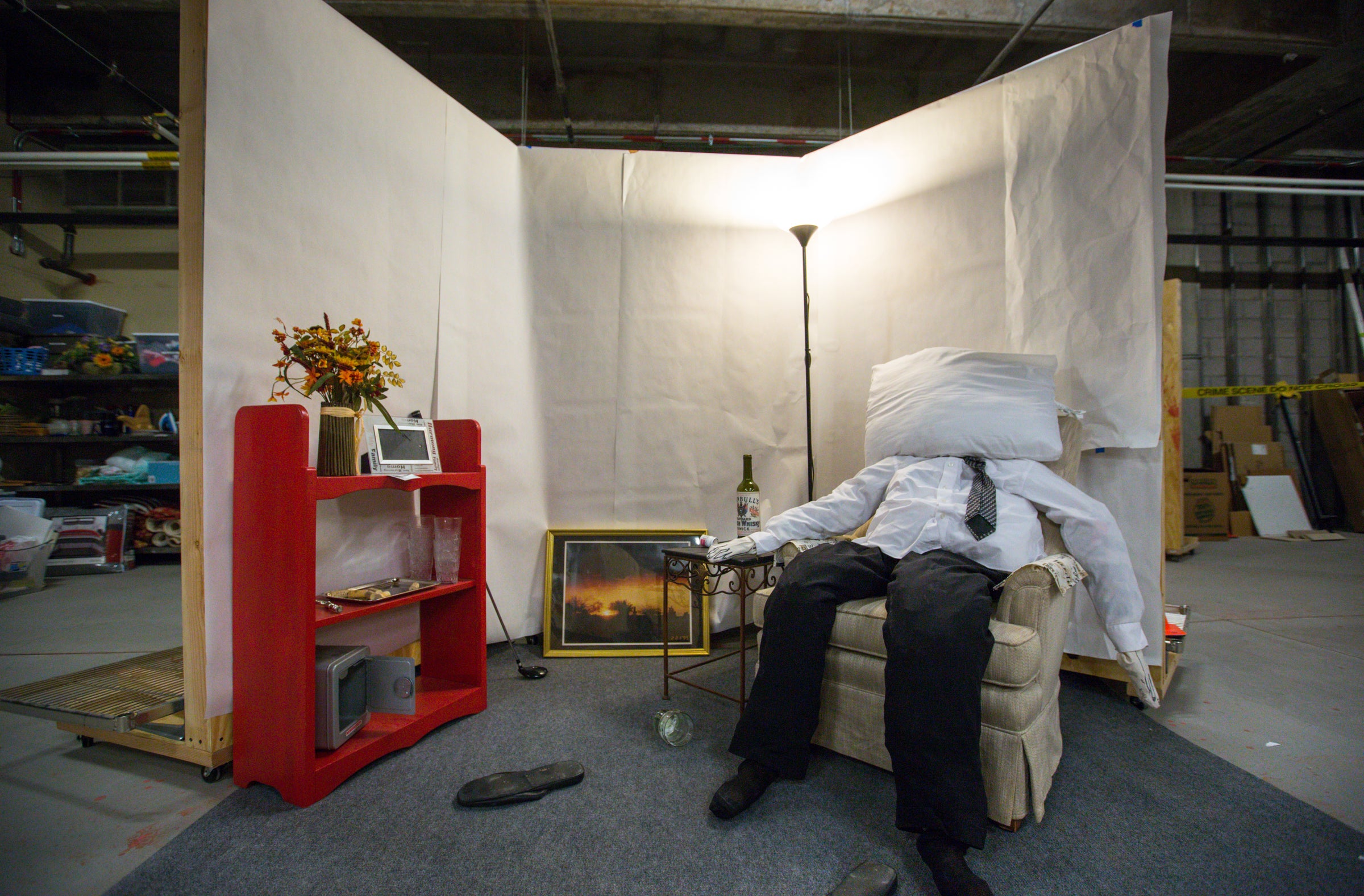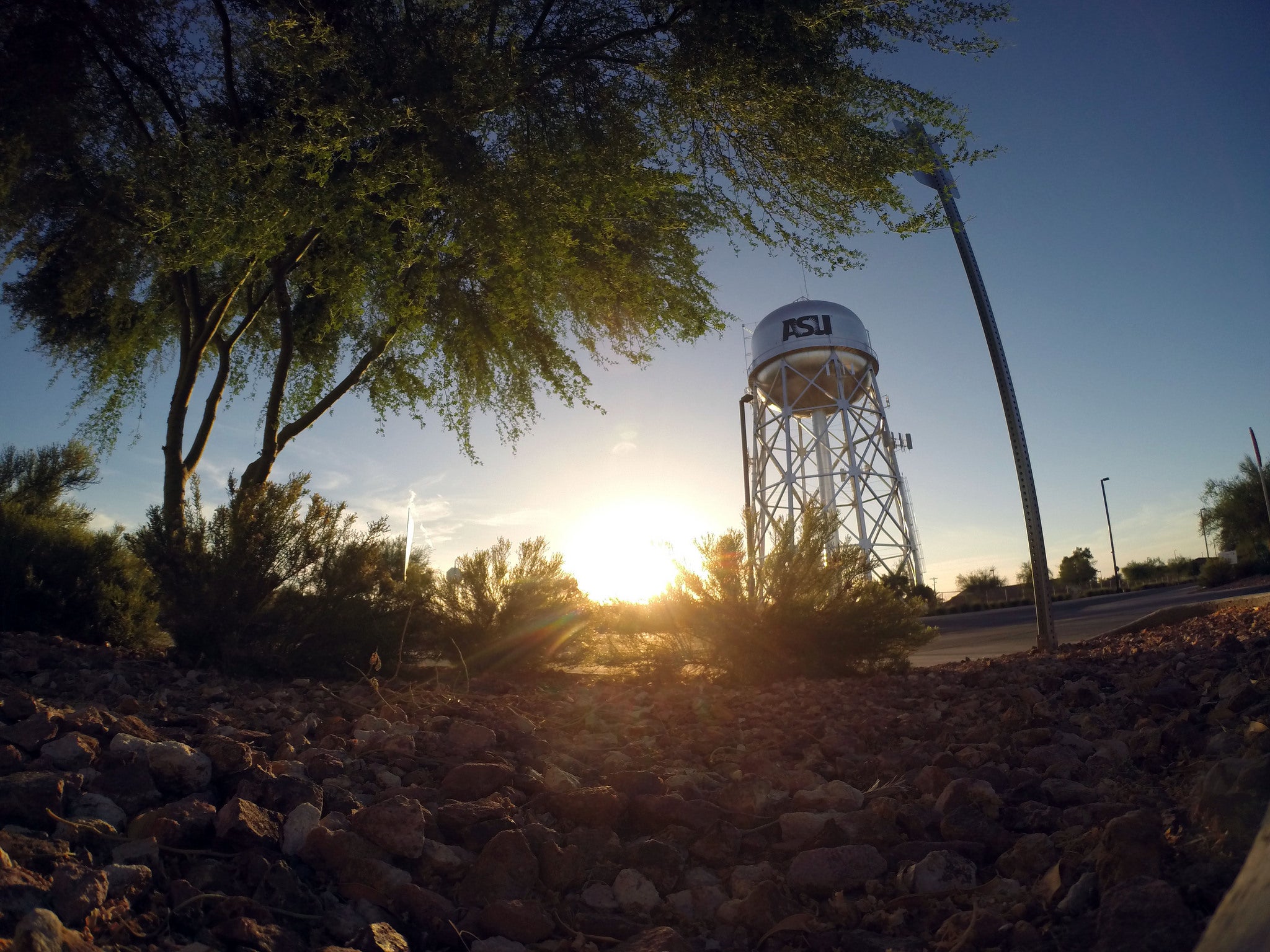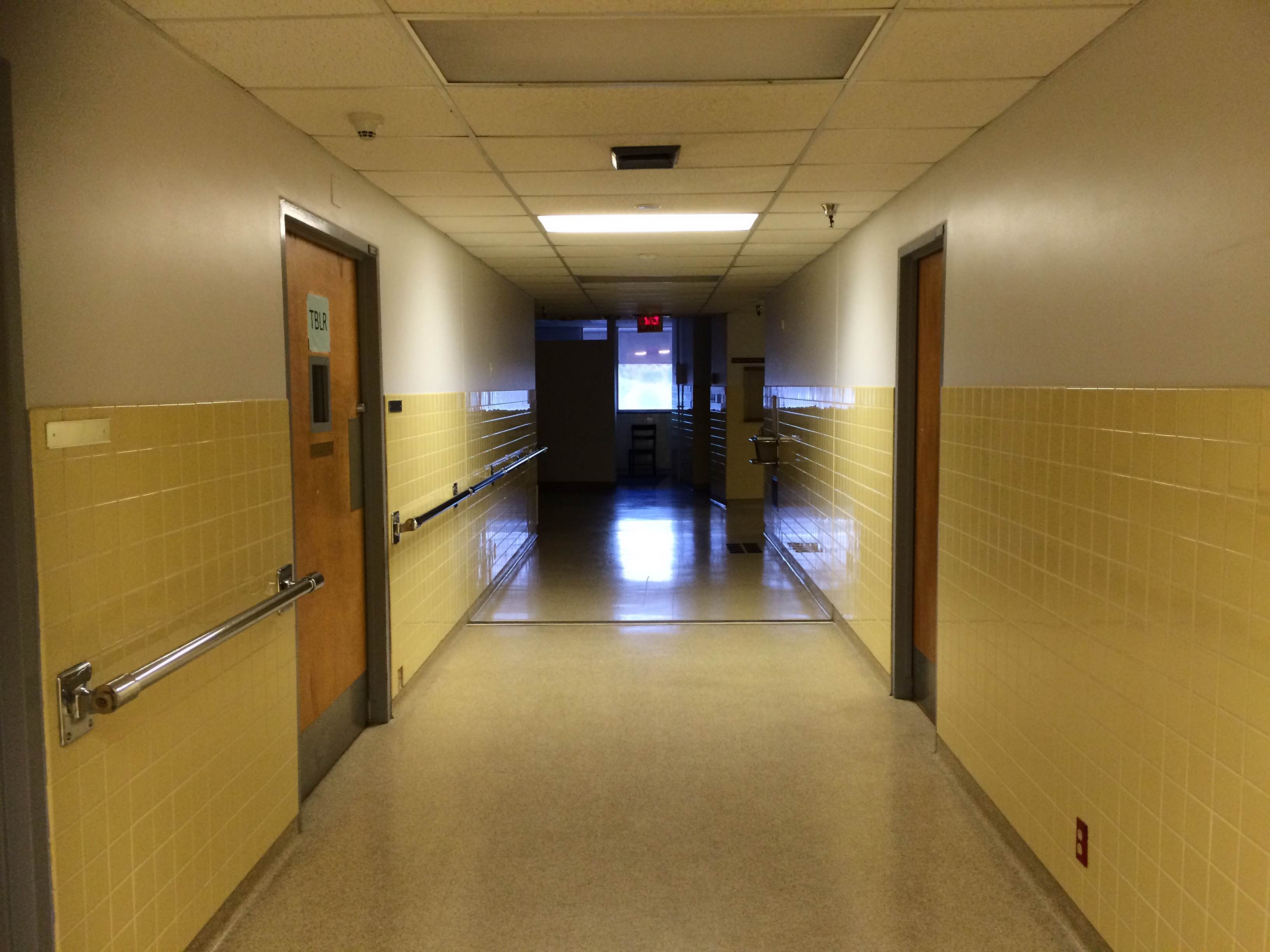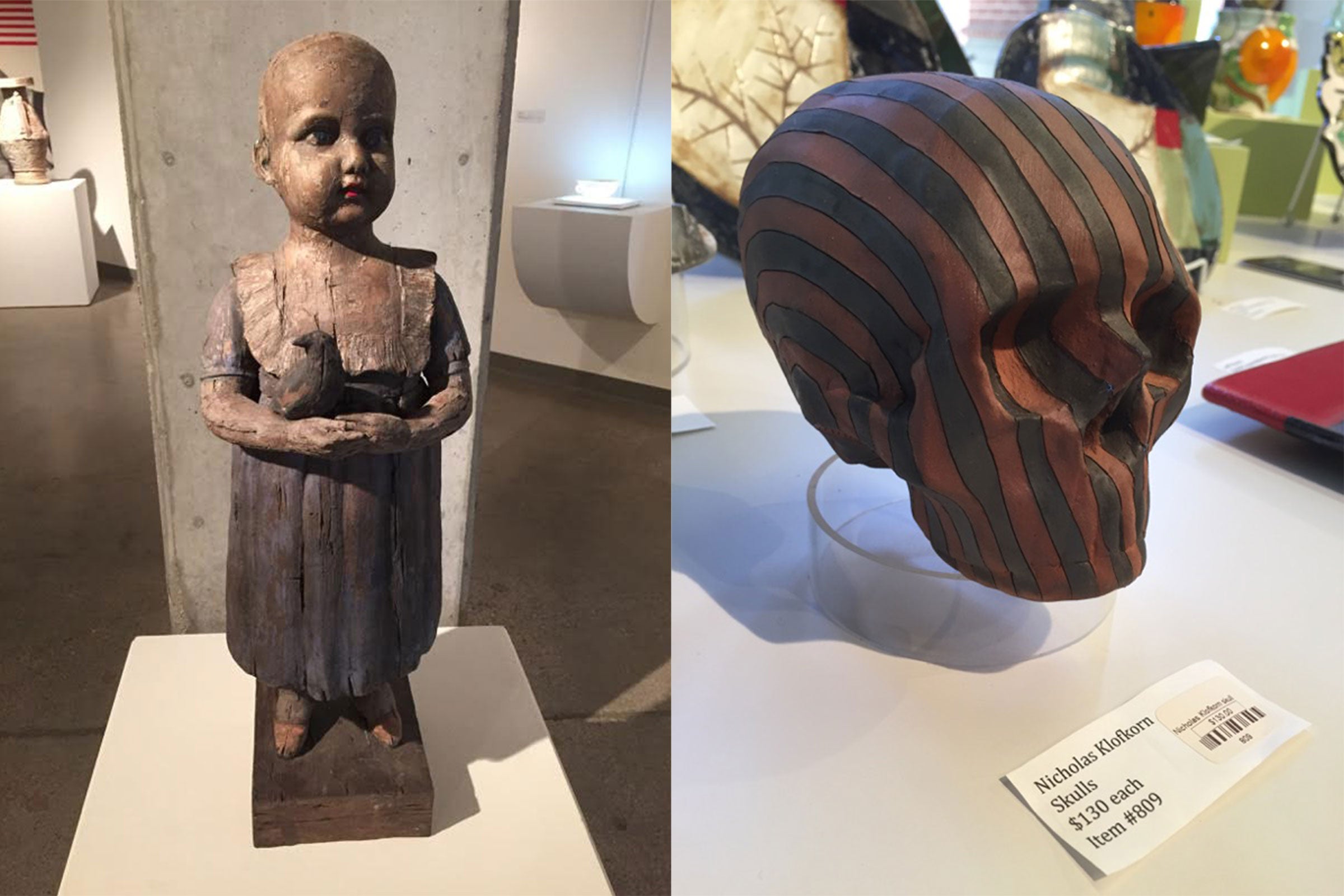'Tis the season to get spooky, and ASU has a few spots that could amplify the mood this Halloween. From reports of haunted buildings to labs full of spiders, the university's various campuses have all sorts of potential frights to inspire the mood this weekend.
West campus
Chad Johnson, assistant professor of the New College Division of Mathematical and Natural Sciences, displays some of the spiders they show children and visitors at the black widow lab at the West campus. The research Johnson and his students are conducting focuses on how spiders survive urban and desert environments. Deanna Dent/ASU Now
On the West campus, students work on scientific research that focuses on the behavior and evolution of urban pests, black widows being chief among them.
“In the research lab we have thousands of black widows in individual containers,” said Chad Johnson, associate professor at the School of Mathematical and Natural Sciences. “If they were in the same tank they’d eat each other because they’re highly cannibalistic and we’d end up with one spider. We have tubs out in the lab filled with black widows that we invite people to come and tour.”
Johnson said that he and his students are constantly doing projects on the black widows and occasionally getting published for their work.
“Just last semester we had a lab published wherein we studied baby black widows and ‘ballooning’,” he said.
According to Johnson, ballooning is when black widows jump off high structures and disperse webbing, allowing them to float for miles.
“My students and I set up an indoor environment where the spiders can do this on a smaller scale,” he said. “We make sure to set up netting though, because I don’t think the neighboring professors would appreciate it if we allowed [the spiders] to escape.”
Is this a crime scene? A mannequin has come to a bad end in the forensic lab of professor Kim Kobojek on the West campus, where the focus is on reconstructing an incident through discovery and forensic science. Charlie Leight/ASU Now
Also on the West campus, a special treat awaits those who enjoy shows such as “Law and Order” — a crime scene investigation lab.
Kim Kobojek, program director for the lab, teaches students all about the grisly world of violent crime, specifically its aftermath.
“One of the first things we teach students is the principles of forensic science,” Kobojek said. “I have a space downstairs in the basement that I call the crime scene lab. All our crime scenes have to be staged due to legal issues, but throughout the program [students] get the opportunity to tour real crime scenes with practicing forensic scientists.
“We’re looking at bloodstain spatter and forensic entomology (maggots) as well as biological material like blood, tissue, skulls and possibly even human bones,” Kobojek said. “I try to make the scenes as realistic as possible. We use mannequins placed in realistic poses with gunshot and stab wounds. We also purchase sheep’s blood, which after it sits for awhile has a nice little smell to it.”
Polytechnic campus
The ASU Polytechnic campus was built on what was once the Williams Air Force base. Alyssa Pakes/ASU
The Polytechnic campus has a fascinating history in that it was built on what was once the Williams Air Force base.
Some parts of the old base are still visible on the campus grounds, most notably the base’s infirmary that’s located where the ASU Preparatory Academy now stands. Inside the ASU Prep building is an old operating room, now just a defunct relic from the site’s military days.
The campus is on many lists of "most haunted places," with often-mentioned reports of a male ghost wandering the old infirmary and voices heard in what used to be the officers club.
Sadly for those seeking the unusual, there have been no sightings of swamp monsters in the big tanks of green goo at the campus' Laboratory for Algae Research and Biotechnology — but one can only hope.
Downtown Phoenix campus
The Downtown Phoenix campus boasts one of the spookiest facilities by far: the cadaver lab. The bodies there have been donated to school for dissection, and ASU students have the privilege of working on the dead in pursuit of medical knowledge.
“We have dry labs and wet labs, the latter being more cadaver-based,” said Jennifer Drake, course manager at the College of Letters and Sciences. “When students are dissecting the bodies, we normally keep the face covered. We’ll ask them if they want to see the face, and the students that don’t will leave the room.
“We also have real human body parts called plastinates,” Drake said.
She explained that plastinates are body parts that have had all their water and fat replaced with plastics, which prevent them from decaying.
“We’ve done this with just about every organ in the body and displayed them all in a big glass case. We even have a human head on display,” she said.
A view of the Westward Ho at the University Center on the Downtown Phoenix campus. Deanna Dent/ASU Now
Anyone who’s ever been on the Downtown Phoenix campus has no doubt seen the massive radio tower perched atop the Westward Ho building. Once the tallest building in Arizona and one of the oldest, Westward Ho has multiple claims to fame in the world of spooky allure.
One such claim is the network of tunnels that lie below the building. They were once used for hiding and transporting alcohol during prohibition, but today are abandoned. Nothing remains but a cold draft blowing though the darkened cement corridors.
(Film buffs will also recognize the building from the opening of the 1998 remake of "Psycho.")
Tempe campus
The ASU Community Services Building on Curry Road used to be a children’s hospital. It now houses a preschool and other ASU offices. Trevor Fay/ASU Now
What many don’t know about ASU’s largest campus is that the Community Services Building on Curry Road used to be a children’s hospital — and according to ASU staff members, some of the children haven’t left.
There have been reports of hearing children playing — even though the children’s preschool that is now housed there was closed at the time — and also seeing objects out of place.
Elsewhere on the Tempe campus, it doesn’t get much better for art lovers this Halloween than the Ceramics Research Center at the Brickyard. The museum, along Mill Avenue, is home to a collection of spine-tingling ceramic dolls and sculptures.
Left: “Girl with Crow” by Margaret Keelan. Right: Skull by Nicholas Klofkorn. Photos courtesy of the ASU Art Museum
Visitors can currently view a sculpture by artist Margaret Keelan, called “Girl with Crow.” Keelan’s work uses clay “to cleverly mimic the weathered surfaces of 19th-century dolls, riding a line between beauty and horror.”
There are also a number of skulls by local artist Nicholas Klofkorn for sale, for anyone interested in adding a touch of macabre to their home.
More Sun Devil community
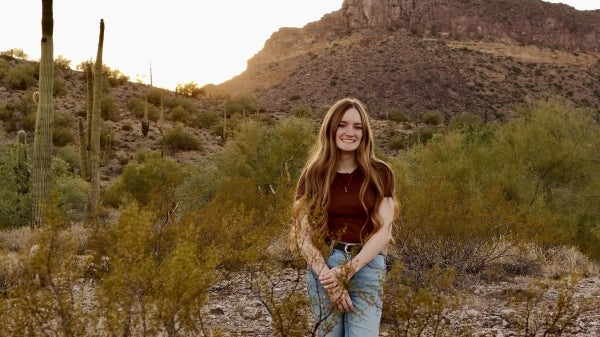
Crime shows led December graduate to a degree in forensics
A fascination with science, the details behind solving cases and crime-focused television shows guided Gracie Thompson to pursue forensic science studies at Arizona State University.“I grew up…

There's no stopping this global health undergraduate
If the end depends on the beginning, Esha Kubavat has set herself up for success. The Naperville, Illinois-born and Anthem, Arizona-raised undergraduate is graduating in December with a bachelor’s…
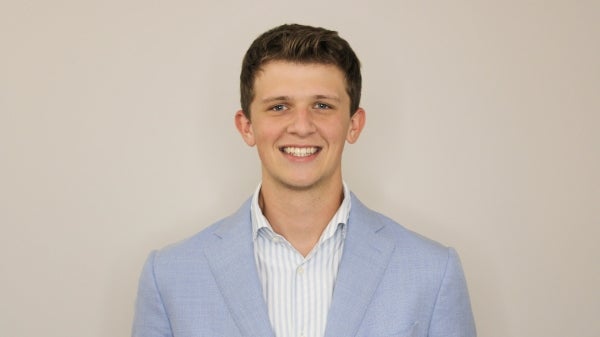
Student leader shares journey in finance and campus community
Chase Mathias first realized that the medical field might not be for him during a high school biology class when he passed out while dissecting a pig. Though he dreamed of becoming an…
